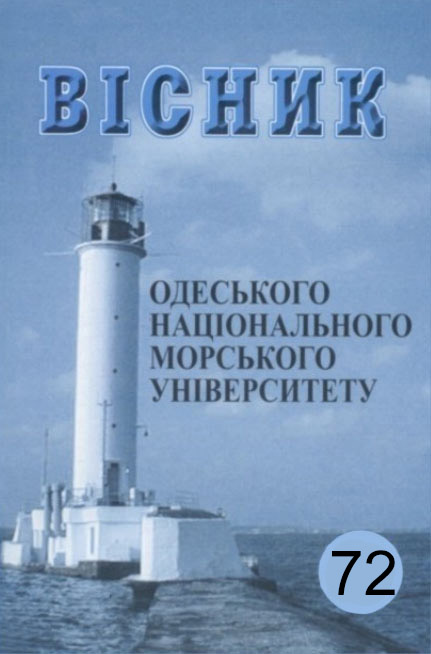Теплове майбутнє планети Земля
##plugins.themes.bootstrap3.article.main##
Анотація
В роботі тепловими розрахунками термодинамічних циклів енергетичних і холодильних установок та процесів, що здійснюються в кондиціонерах, показується одна з причин підвищення температури атмосфери планети «Земля». Для зменшення темпу підвищення температури необхідно обмежити використання вуглецевої енергетики (нафто- і газовикористання), перейти на відновлювальні види енергії і оптимізувати використання деяких благ циві- лізації. Щоб уповільнити процес підвищення температури атмосфери, необхідно постійно удосконалювати термодинамічні цикли енергетичних і холодильних установок та процеси, що використовуються в кондиціонерах. Ці установки і пристрої є, і залишаться, суттєвими тепловими забруднювачами атмосфери Землі. Так установки для перетворення теплоти, яка отримується із нафти, що видобувається за добу тільки чотирма провідними нафтовидобуваючими Світовими державами, в механічну роботу, забруднюють атмосферу теплотою, яка еквівалентна потужності 334-х Запорізьких АЕС. Вся ж теплота тільки з цієї нафти, яка в кінці кінців потрапляє в атмосферу, дорівнює сумарній потужності майже 500 Запорізьких АЕС. Відстань між ними, якщо їх рівномірно розташувати вздовж Екватору, дорівнює всього лише 80 км. Кондиціонер, підтримуючий комфортний мікроклімат в приміщені при температурі зовнішнього повітря 35 ºС, теплоприпливи в яке дорівнюють 20 кВт, викидає в атмосферу 220 кВт теплоти. При підвищені температури зовнішнього повітря на 5 ºС потужність теплоти, яка забруднює атмосферу, зростає до 330 кВт, тобто коефіцієнт теплового забруднення сучасним кондиціонером дорівнює 16,5. Такими ж тепловими забруднювачами атмосфери є звичайні холодильні установки, які викидають в оточуюче середовище на 30-50 % більше теплоти ніж їх холодопродуктивність. До того ж, холодильні установки, як правило, працюють на високотехнологічній енергії, при виробництві якої має місце теплове забруднення атмосфери, якщо це не гідроелектроенергія. Зупинити процес теплового забруднення атмосфери Землі неможливо, можна тільки його уповільнити, застосовуючи тільки відновлюємі види енергії і удосконалюючи використовуємі зараз термодинамічні цикли енергетичних і холодильних установок та тепломасообмінні процеси в комфортних, технічних і технологічних кондиціонерах.
##plugins.themes.bootstrap3.article.details##
Посилання
2. https://www.ukrinform.ua/rubric-economy/3160336-zaporizka-aes-vperse-v-istorii-vijde-na-svou-povnu-proektnu-potuznist-glava-energoatoma.html [Electronic resources]
3. Lemmon E.W., Huber M.L., McLinden M.O.(2007). NIST Reference Fluid Thermodynamic and Transport Properties – REFPROP, Version 8.0.– Gaithersburg. – 51 p.
4. Boychuk A.S., Lavrenchenko G.K., Slynko A.G., Kozlovskyi S.V. (2021). Gazoparoturbinna ustanovka iz zagal'nym gazoparoutvorjujuchym pry- strojem i nezalezhnymy turbinamy.[Gas-steam turbine unit with common gas- steam generating device and independent turbines]. Refrigeration Engi- neering and Technology, 57(4), Р. 254-263. DOI: https://doi.org/10.15673/ret.v57i4.2208 (in Ukraine)
5. Lavrenchenko G.K., Slynko A.G., Halkin V.M., Kozlovskyi S.V., Boychuk A.S. (2022). Utylizacijna kombinovana energoholodyl'na ustanovka z povnym regeneratyvnym teploobminom. [Recycling combined refrigeration power unit with complete regenerative heat exchange] Refrigeration Engineering and Technology, 58(1), Р. 50-61. DOI: https://doi.org/10.15673/ret.v58i1.2315 (in Ukraine).
6. Lavrenchenko G.K., Slynko A.G., Halkin V.M., Kozlovskyi S.V., Boychuk A.S. (2022). Gidrodynamichnyj metod peretvorennja ridyny v peregritu paru [Hydrodynamic method of liquid conversion to overheated vapor] Refrigeration Engineering and Technology, 58 (2), Р. 92-97. DOI: https://doi.org/10.15673/ret.v58i2.2381 (in Ukraine).
7. Lavrenchenko G.K., Slynko A.G., Halkin V.M., Kozlovskyi S.V., Boychuk A.S. (2022). Termodynamichnyj cykl kombinovanoi' vodnevo paroturbinnoi' ustanovky [Thermodynamic cycle of a combined hydrogen-steam turbine unit]. Refrigeration Engineering and Technology, 58 (3), Р. 164-172. DOI: https://doi.org/10.15673/ret.v58i3.2488 (in Ukraine).
8. G.K. Lavrenchenko, A.G. Slinko, A.S. Boychuk, V.M. Halkin, S.V. Kozlovskyi (2023). Improved thermodynamic cycle of a steam turbine plant. Journal of Chemistry and Technologies, 31(1), Р. 178-185. DOI: https://doi.org/10.15421/jchemtech.v31i1.274768
9. G.K. Lavrenchenko, A.G. Slinko, A.S. Boychuk, V.M. Halkin, S.V. Kozlovskyi (2023). Conversion of liquid to steam. How and why? Journal of Chemistry and Technologies, 31(3), Р. 678-684. DOI: https://doi.org/10.15421/jchemtech.v31i3.285771
10. Vasserman O.A., Slynko A.G., Shutenko M.A. (2020). Innovacijni termo- dynamichni cykly energetychnyh ustanovok [Innovative thermodynamic cycles for power plants]. Odesa. Phoenix. 182 p. (in Ukraine)
11. Vasserman O.A., Slynko A.G. (2022). Holodyl'ni ustanovky ta i'h innovacijni cykly [Refrigeration plants and their innovation cycles]. Odesa. Phoenix. 424 p. (in Ukraine).
